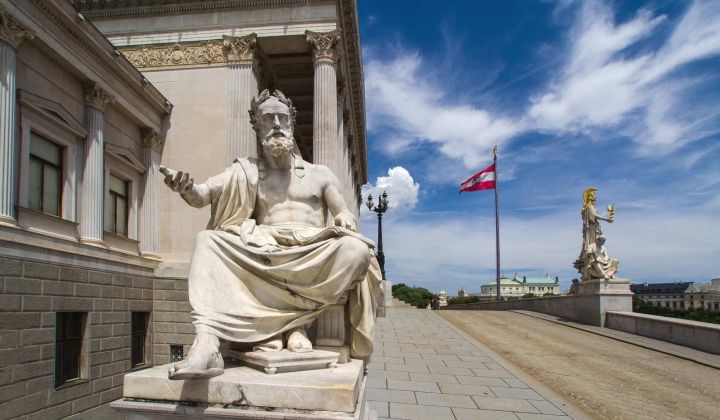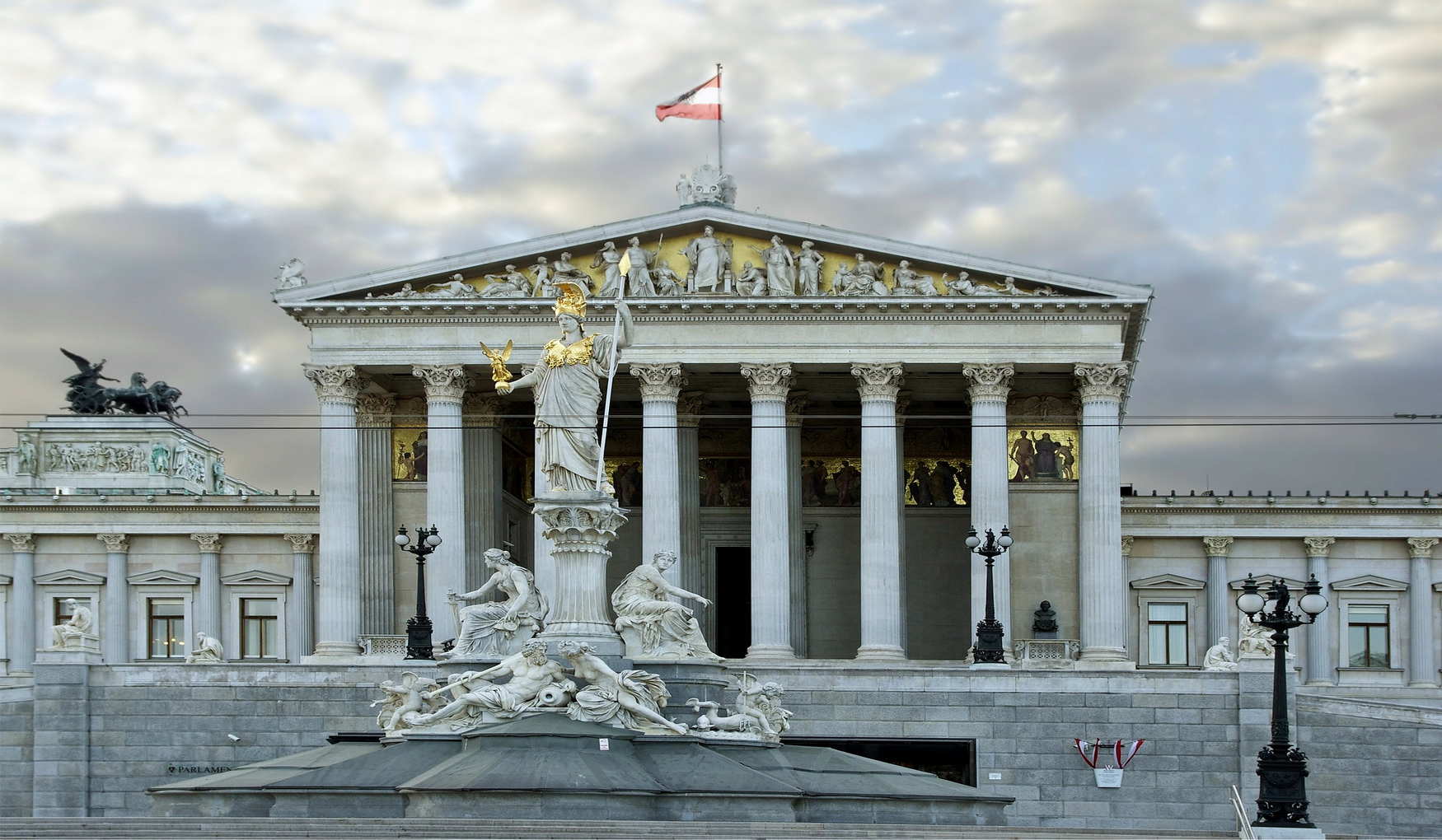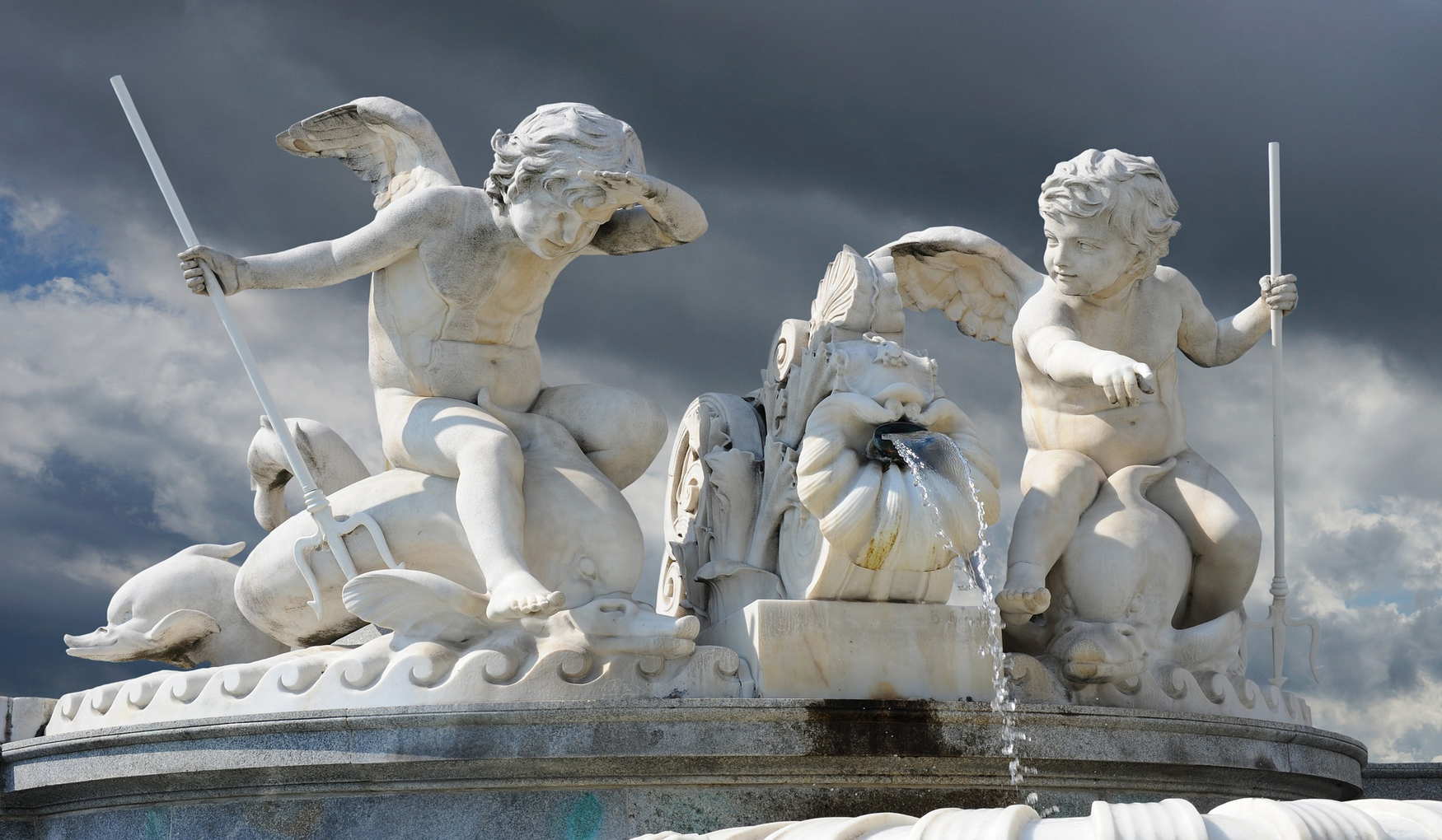If we were asked to make an association with the Austrian capital of Vienna, most of us would think of great composers, opera, waltzes and even sweets.
But Vienna is also a city of stunning architecture, of grandeur and refinement. The city's architectural ensemble is a harmonious blend of Gothic, Baroque, Art Nouveau and Modern styles.
The parliament building in Vienna, like most of the administrative buildings in the capital, was constructed in the style of historicism — a kind of stylisation of traditional architectural styles whose elements and forms were elevated to the highest level of splendour. The creativity of the architects was based mainly on the Gothic and Baroque styles.
It is worth noting that the Parliament in Vienna was built in the style of an ancient temple. Even travellers unfamiliar with architectural styles know this when they see a grandiose fountain with a statue of Athena-Pallada at the top of its composition. The supreme goddess of the ancient Greek pantheon, the embodiment of all-conquering universal power, holds in her hand the winged goddess Nike, messenger of success and happy events.
Well, the victory symbol in front of the government building looks quite logical, but why is the Austrian parliament surrounded by menacing horsemen holding their horses?
It turns out that the horses symbolise parlamentarians who should not overstep the bounds of decency during debates, and who should not engage in "fights without rules" (both psychologically and physically) within the walls of the parliament. Hmmm, who are the horsemen then — if not the people they restrain and whom they serve?
The statues of historians on the steps of the main entrance are a reminder that the lessons of history are as important as legal precedents, so they should not be forgotten or neglected.
The Parliament of Vienna invites you to enjoy not only its magnificent façade, but also its equally opulent interior. The Marble Hall follows the style of the Athenian Acropolis, but with an interesting twist — four rows of columns around the hall are inside, whereas in older buildings they were traditionally outside. The Federal Assembly Hall is notable for the large number of heraldic symbols on its walls.

Why, in 1874, when the first stone was laid for the parliament building in Vienna, did the famous architect Theophilus Hansen begin his life's work in the antique style?
The fact is that it was the inhabitants of ancient and glorious Hellas that Hansen saw as the embodiment of the desire for freedom and democracy. The Greeks also valued harmony in all forms of art, combining moderation and elegance with beauty and luxury.
When visiting Vienna, the Parliament is not usually at the top of the list for those travelling with children. However, the abundance of characters from ancient Greek mythology will be of great interest to young fans of fairy tales and the fantasy genre.
And really, how is Athena Pallada worse than Iron Man? Let's just say she's got a lot more going for her. Besides, the vast parliamentary halls, the creative tours and the right presentation of information are sure to entertain the little rascals. They especially like the following story, which has a little something to do with Selma Lagerlöf's 'The Wonderful Journey of Nils and the Wild Geese'.
Many years ago, Parliament was occupied. No, not by enemy forces or evil wizards, but by ordinary mice. And there were so many of them that they started gnawing on everything they could see (Parliament somehow didn't manage to keep up with the food supply), including electrical wires and cables.
As a result, the work of the government was completely paralysed. It was not Niels' magic pipe that saved the Austrian people from anarchy, but ordinary cats that were let into the building.
The Parliament building in Vienna is one of the architectural marvels of the city, which has survived several royal dynasties, risen from its knees after the terrible plague, not fallen into decadence after inflation and default, and withstood the destructive whirlwinds of world wars.











